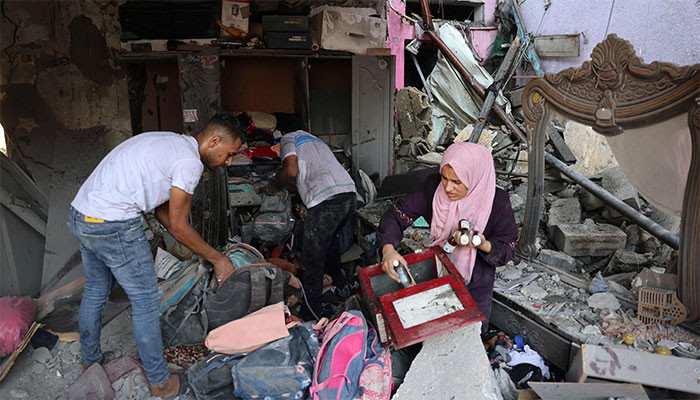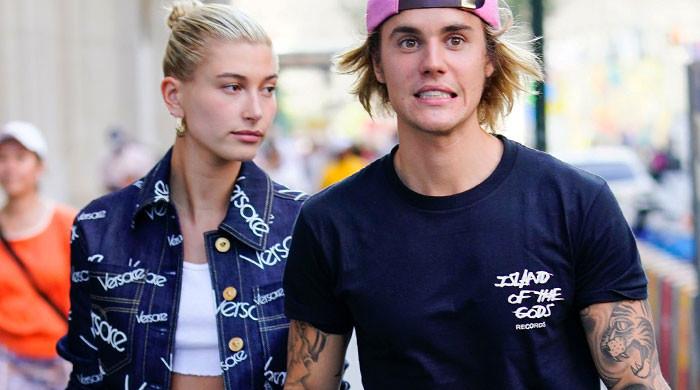Smartphone cameras turned extraordinarily highly effective during the last 5 years. Their leap in high quality was largely pushed by advancements in computational photography, a expertise that makes use of algorithms, synthetic intelligence and sensors to supply sharp, lifelike photos. Now all of us can shoot gorgeous pictures that rival the work of pros.
So what’s subsequent? I hate to say it: faker images.
Google, which has lengthy been an trade chief in smartphone pictures, will on Thursday begin delivery the Pixel 8, a $700 handset with a collection of A.I.-powered photo-editing instruments. The telephone software program does rather more than alter the sharpness and brightness of a photograph — it makes use of A.I. to generate imagery or to take away components to present you precisely the photograph you need.
Think about, as an example, a photograph during which an individual’s shoulder is minimize off. With Google’s software program, now you can faucet the Magic Editor button and scoot that particular person over within the body. From there, the software program will use A.I. to supply the remainder of that particular person’s shoulder.
Or contemplate an image you shot of a buddy in entrance of a historic monument, however the background is crowded with different vacationers. Utilizing the identical modifying software, you’ll be able to choose the photograph bombers and hit the Erase button. In seconds, the strangers will vanish — and Google’s software program will robotically generate imagery to fill within the background.
Google has built-in these new A.I. modifying instruments into Google Photos, its free photograph album app for Android gadgets and iPhones, which has a couple of billion customers. The corporate mentioned the Pixel Eight was the primary gadget with the A.I. editor, which suggests the identical instruments may quickly arrive for different gadgets.
Google’s A.I. photograph editor is a part of a wave of generative A.I., which turned well-liked within the final yr after the discharge of the ChatGPT chatbot, which produces textual content in response to prompts. Picture-based generative A.I. instruments like DALL-E, Midjourney and Adobe Firefly additionally let folks create photos by merely typing in a immediate, reminiscent of “a cat sleeping on a windowsill.”
But the Pixel Eight is a turning level. It’s the first mainstream telephone to bake generative A.I. immediately into the photograph creation course of at no additional price, pushing smartphone pictures into an period when folks will more and more need to question whether what they see in their images is real — together with images from family members.
(Apple’s iPhone digicam can add some synthetic results, reminiscent of a “stage gentle” that brightens a topic and blacks out the background, but it surely stops wanting producing faux imagery.)
“This can be a actually massive second that’s going to vary a number of issues about imagery,” mentioned Ren Ng, a pc science professor on the College of California, Berkeley, who teaches programs on computational pictures. “As we go boldly forth into this future, a photograph is now not a visible reality.”
To check whether or not it is a good factor, I shot and edited dozens of images with the Pixel 8. I used to be impressed, creeped out and skeptical that I might wish to preserve producing faux images. Right here’s what I discovered.
Image Imperfect
Persevering with my custom when testing many smartphone cameras, I used the Pixel Eight to snap images of my canines — Max, a corgi, and Mochi, a brown Labrador — after which utilized the A.I.
The outcomes had been hit or miss.
In a single photograph of Max sitting on a big rock, I needed to take away a quotation kind from a police officer for letting my canines run off leash and not using a allow in an off-leash canine park. (Who has ever heard of such a factor?) Within the Google Photographs app, I tapped the Magic Editor button and traced an overview across the piece of paper.
The software program did a outstanding job. It changed the maddening piece of forms with the rock slab and a few pine needles.
In one other photograph, the place Mochi is standing close to Max and the suitable facet of her butt is minimize off within the body, I attempted scooting her to the left. The Pixel Eight did OK shifting her, however the suitable facet of Mochi’s computer-generated behind was blurry and her left paw was minimize off.
Then got here probably the most jarring outcome. In a photograph of a pizza restaurant the place Mochi’s face was minimize off within the body, I attempted shifting her over to check if the A.I. may generate the remainder of her head. I didn’t anticipate the software program to completely reproduce her grizzled mug, however the A.I. produced one thing nightmarish, a half-demi-god hellhound with a pair of hooves sprouting from her legs.
Google features a Regenerate button for if you end up sad with the outcomes, which I attempted. However it yielded equally off-putting outcomes every time.
In the identical photograph, I attempted highlighting and deleting the strangers within the background. This labored properly however felt unsettling, like watching the “snap” scene in “Avengers: Infinity War,” when half the universe’s inhabitants disappeared.
It’s early days, and Google expects folks to run into imperfections. “This characteristic is in early phases and received’t all the time get it proper,” the corporate mentioned in an announcement. “We’re on the lookout for suggestions to repeatedly enhance our fashions.”
To make use of or to not use
Right here’s my suggestions: I don’t suppose these A.I. modifying instruments ought to be featured so prominently within the images app of a flagship smartphone, particularly of their imperfect state.
And even when the expertise matures, there are broader questions — reminiscent of the moral problems with synthetic pictures — to think about and navigate.
Enhancing images for readability and brightness improves a picture with out altering its substance. However artificially including components to a photograph crosses a threshold, rendering a picture a faux. Utilizing these A.I. instruments to supply and share images may contribute to the unfold of pretend media on-line when misinformation is already rampant and it’s arduous to know what to belief.
Dr. Ng, the pc science professor, mentioned it was as much as us to resolve easy methods to use generative photograph expertise responsibly, particularly now that it has arrived on smartphones. He has set his personal limits.
“Something that touches authenticity to me, as a photographer, could be very problematic,” he mentioned.
As for myself, I might use these A.I. photograph instruments to take away visible distractions, just like the photograph bomber ruining an in any other case nice image, from images shared amongst household. However even then, I might use these instruments sparingly, and I might not publish the fakery on-line.






